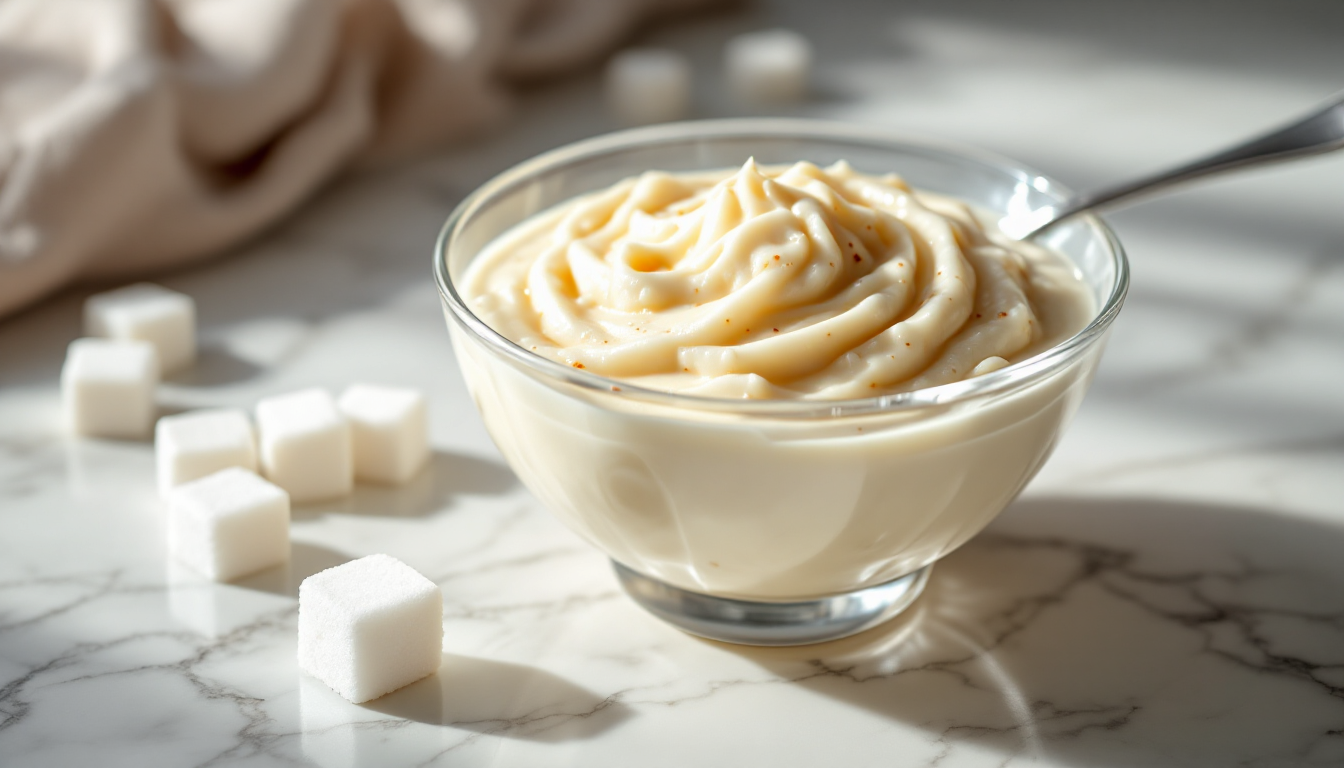Ambrosia Rice Pudding has achieved iconic status in British food culture, but beneath its creamy, comforting exterior lies a nutritional profile that warrants closer examination. This popular dessert combines nostalgia with convenience, yet contains concerning levels of added sugars and processed ingredients that can impact health when consumed regularly.
The Deceptive Sweetness: Sugar Content Revealed
A single 200g serving of Ambrosia Rice Pudding contains approximately 17.4g of sugar – equivalent to over 4 teaspoons. This represents nearly 35% of the World Health Organization’s recommended daily sugar limit for adults. Regular consumption pushes consumers dangerously close to exceeding healthy sugar thresholds, especially considering the average person consumes many other sources of hidden sugars throughout their day.
Dr. Melissa Carter, registered dietitian, explains: “Products like Ambrosia Rice Pudding exemplify the ‘health halo effect’ – consumers perceive rice as nutritious, so they underestimate the impact of the added sugars, which can contribute to metabolic issues when consumed frequently.”
Nutritional Breakdown: What’s Really Inside?
Each serving (200g) delivers approximately 186 calories, 4.0g of fat (2.6g saturated), and minimal fiber. While not extremely high in calories compared to some desserts, the combination of refined carbohydrates and added sugars creates a problematic nutritional profile. The rice used is white, processed rice rather than whole grain, meaning it’s stripped of much of its fiber and nutrients.
The product contains approximately 9% rice – the rest comprises milk, sugar, and additives needed for texture and shelf stability. This means you’re primarily consuming a sweetened milk product rather than a rice-based dish, despite marketing that emphasizes the rice component.
Blood Sugar Rollercoaster: The Metabolic Impact
The high refined carbohydrate content combined with added sugars creates the perfect storm for blood glucose fluctuations. When consumed, Ambrosia Rice Pudding can trigger rapid blood sugar spikes followed by crashes, potentially leading to energy dips and renewed hunger shortly after consumption.
Research published in the Journal of Nutrition has demonstrated that repeated consumption of foods with this profile can contribute to insulin resistance over time – a precursor to Type 2 diabetes. One landmark study showed that dietary patterns high in refined carbohydrates and added sugars significantly impact fasting glucose levels, a key marker of metabolic health.
The Processing Problem: Lost Nutrients and Added Concerns
Unlike homemade rice pudding, commercial versions undergo extensive processing to achieve shelf stability. This process destroys many naturally occurring nutrients, requiring fortification to replace some lost vitamins and minerals.
- White rice used is stripped of its bran and germ (containing fiber and nutrients)
- High-temperature processing reduces nutritional quality
- Long shelf-life requires stabilizers and preservatives
- Lacks the beneficial compounds found in whole foods
Marketing vs. Reality: The “Wholesome” Perception
Ambrosia’s marketing emphasizes nostalgia, comfort, and simplicity – suggesting a wholesome product reminiscent of homemade desserts. However, this masks the reality of its nutritional shortcomings. The creamy texture and familiar taste trigger powerful associations with comfort and satisfaction, encouraging regular consumption despite health drawbacks.
I’ve seen numerous patients who consume rice pudding several times weekly, believing it’s a healthier alternative to other desserts. When we analyze the sugar content, many are shocked to discover they’re exceeding recommended sugar limits through this one product alone. – Dr. James Morrison, Endocrinologist
Healthier Alternatives: Satisfying Your Sweet Tooth Wisely
For those seeking the comfort of rice pudding without the nutritional downsides, consider these healthier options:
- Homemade rice pudding using brown rice, plant milk, and natural sweeteners like mashed banana
- Greek yogurt topped with a small portion of cooked brown rice and cinnamon
- Chia seed pudding made with unsweetened almond milk and a touch of maple syrup
These alternatives provide similar textural satisfaction while delivering more protein, fiber, and fewer added sugars. Some individuals have successfully transitioned to these options after realizing their appetite patterns changed when consuming less processed foods.
The Inflammation Connection: Beyond Just Calories
The combination of refined carbohydrates and added sugars in Ambrosia Rice Pudding creates a potentially pro-inflammatory food profile. Chronic inflammation is linked to numerous health conditions, from cardiovascular disease to cognitive decline. Research has shown that diets high in refined carbohydrates and added sugars can increase inflammatory markers in the body.
Adding antioxidant-rich foods like nuts and berries to your diet can help counteract these effects. In fact, just two Brazil nuts daily can boost antioxidant capacity by 64% naturally.
Conclusion: Enjoying Rice Pudding Mindfully
Ambrosia Rice Pudding, like many processed desserts, is best enjoyed occasionally rather than as a regular dietary staple. Its high sugar content, refined carbohydrates, and limited nutritional benefits make it a treat to be consumed mindfully rather than a wholesome snack. By understanding what’s really in the products we consume, we can make more informed choices that support long-term health while still occasionally enjoying nostalgic favorites.
